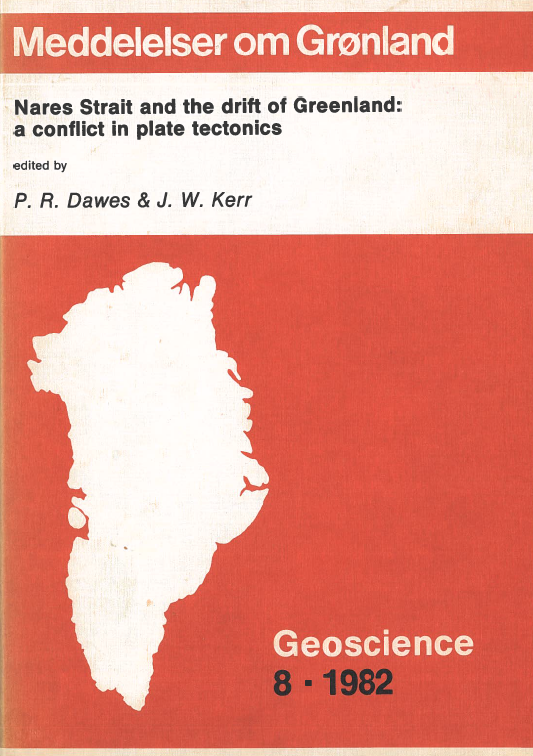The geophysical implications of minimal Tertiary motion along Nares Strait
DOI:
https://doi.org/10.7146/moggeosci.v8i.139584Abstract
In the light of the geological evidence indicating less than 25 km of left-lateral offset along the Wegener Fault in Nares Strait, we examined three models for the formation of Baffin Bay which do not involve sea-floor spreading in that region. Our purpose was to investigate whether these models present realistic alternatives to sea-floor spreading and simultaneously remove the requirement for extensive lateral separation between Greenland and North America. These models are crustal extension, mantle upwelling and magmatic intrusion. Each model is constrained to match the observed subsidence and present width of the basin and, where possible, the observed crustal thickness. The crustal extension and magmatic intrusion models require extensive left-lateral motion between Greenland and North America, and thus they appear to be at odds with the geological observations. Furthermore, neither the mantle upwelling model nor the magmatic intrusion model can produce the required crustal thinning (85% of continental crust must be eliminated), and there are no analogous examples of such an extreme case of 'oceanization' elsewhere in the world. Thus none of the models can account for both the thin crust in central Baffin Bay and the apparent lack of offset along the Wegener Fault.
We suggest two possible solutions to the conflict between the available observations: 1) Tertiary left-lateral motion has reversed earlier right-lateral motion; or 2) left-lateral motion between Greenland and North America was accommodated elsewhere than along the Nares Strait waterway. The first is shown to be in conflict with geological evidence from the margins of Baffin Bay. There is at present no evidence to support the second, but we suggest that this possibility be critically evaluated in future studies of the geological history of the region. In this context, we suggest that minimal offset across the Nares Strait waterway need not be incompatible with major Tertiary left-lateral motion on the Wegener Fault if one accepts the concept of a fault zone rather than a single discrete offset. Future studies of the extent of horizontal deformation immediately north of Baffin Bay and within the Sverdrup Basin are also required.
A tectonic model, which includes elements of mantle upwelling and crustal extension at the margins and sea-floor spreading in central Baffin Bay, accounts for the observed subsidence and crustal thickness in the centre of the basin, and explains the uplift of eastern Baffin Island and western Greenland. It also satisfies the geometrical requirements of plate tectonic reconstructions for the North Atlantic and Arctic Oceans. However, it requires that an acceptable means of accommodating the opening of Baffin Bay be found before it can be considered valid.
Downloads
Published
How to Cite
Issue
Section
License
Coypyright by the authors and the Commision for Scientific Research in Greenland / Danish Polar Center. No parts of the publications may be reproduced in any form without the written permission by the copyright owners.


